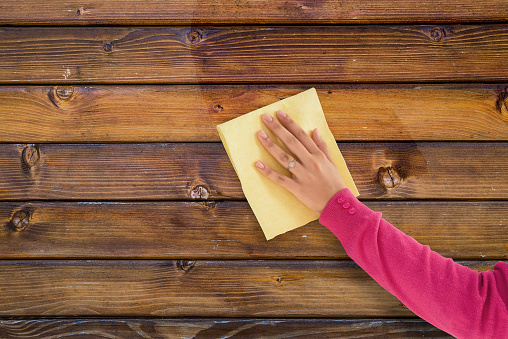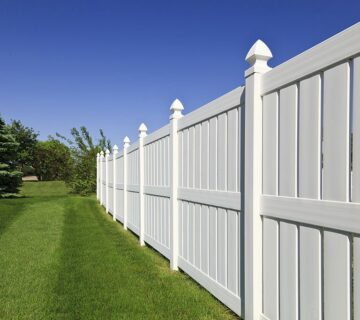Cleaning a Wood Fence In 4 Steps
Although pressure washing is a rapid and effective technique to clean a wood fence, it is only sometimes practical or safe because too much water pressure can occasionally damage the surface and remove its finish. Choosing the best wood fence cleaner and the simplest techniques to clean your fence without compromising its aesthetic are covered in this blog.
Safe Cleaning Options for Your Wood Fence
Water is the most essential cleaning you can use. If it hasn’t been a while since you’ve cleaned your fence, a quick hose-off will keep it looking excellent. Most surface dirt can be cleaned with a wire brush or scraper if you discover stubborn grime or mold. If water isn’t working for you, think about using these cleaners.
Vinegar
By eliminating the bacteria while cleaning, vinegar can aid if you observe an excess of algae or mold. A little goes a long way, so take care not to use too much. Use one cup of vinegar for every four cups of water when preparing your solution to ensure optimum dilution.
Dish Soap
Clean and scrape your fence first, then use warm water and dish soap to finish. Although this component is useful for surface stains and grime, it might not be sufficient for deeply ingrained mold or severe discoloration.
Commercial Fence Cleaners
Solutions for cleaning fences are available at your neighborhood hardware shop. Some of them have organic components that are mild on wood. Because some chemicals can hurt wood more than they can help, it’s important to pay attention to the ingredients (more on this below).
Bleach
Use bleach if you want to refinish your fence. The appearance of your wood will be altered, so this option is only appropriate if you plan to touch up the surface afterward. It works well for killing mold and algae, but you shouldn’t use too much of it. Due to its strength and toxicity, bleach should typically only be used as a last resort.
Potentially Harmful Cleaners for Your Wood Fence
Certain cleaning products contain substances that, when absorbed through the surface, can alter the color of your wood or jeopardize its structural integrity. While cleaning your fence, try to avoid the following materials and compounds, or use them sparingly.
Bleach
While bleach is a harmful chemical that is incredibly potent, it can be useful when used on difficult stains and if you don’t mind discoloring your wood. Both you and your animals could be hurt, and it could ruin your yard. If you must use bleach, use it cautiously and in small amounts. Using too much could cause wood to decay.
Hydrogen Peroxide
For the same reason why bleach is problematic, hydrogen peroxide is also. It may seep into the pores of the wood and stain them, leaving blotches behind and bringing on decay.
Ammonia
Bleach and ammonia when combined create a poisonous gas that can seriously hurt anyone nearby. Ammonia damages wood from the inside, which is another reason it shouldn’t be used. If you purchase professional cleaners, pay close attention to the ingredient list because some cleaners contain ammonia, which you should avoid while cleaning wood fences.
Lemon Juice
Because of its acidity and natural oils, this natural component is renowned for being a powerful cleaner for a variety of surfaces. It could ruin the finish on your fence and is ineffective on wood.
Cleaning a Wood Fence by Hand: Step-by-Step
If you decide to use soap, fence cleansers, or natural, wood-safe alternatives, then here is how to clean a wood fence without pressure washing.
Step 1: Prep the Fence
Spray the fence well with your hose, and then scrape the tougher spots with a wire brush. In some circumstances, following this initial spray, you’ll see an improvement right away.
Step 2: Get Your Cleaner Ready
Apply the cleaner to your fence and let it soak before using it, whether it’s soap or a cleaner for wooden fences. Make careful to combine your solutions with warm water, and let them on the wood for around five minutes.
Step 3: Use Some Elbow Grease
After the bath, scrub off any dirt that is visible. To remove the difficult particles, use a scraper or a wire brush. You might need to use vinegar to spot clean if you’re not obtaining the outcomes you want.
Step 4: Rinse Your Fence
The fence’s final phase is to be sprayed down. It’s crucial to keep in mind this step to prevent internal rotting from the solution soaking into the pores. To shield your fence from the weather, if you choose, you can put some wood finish.




